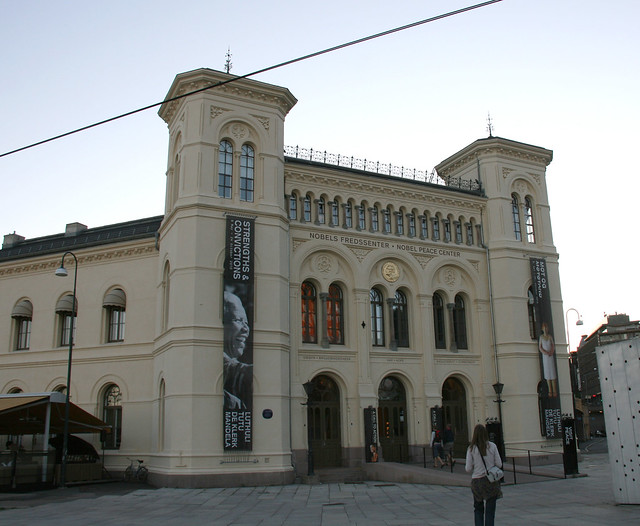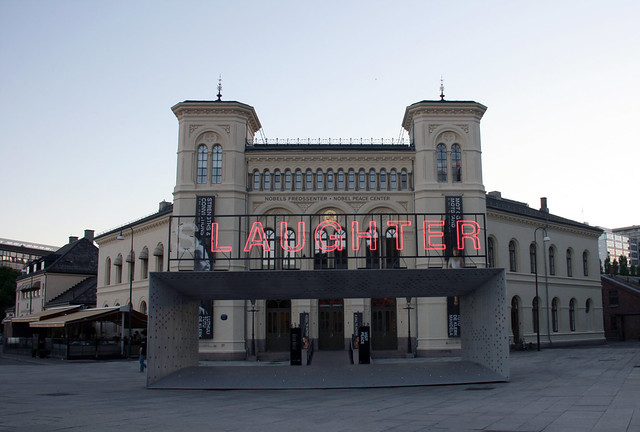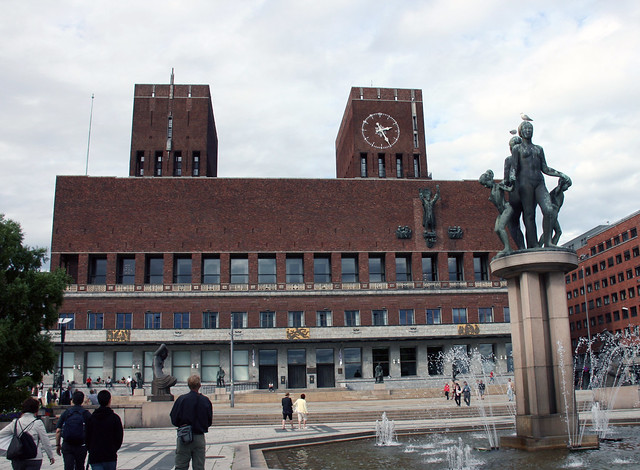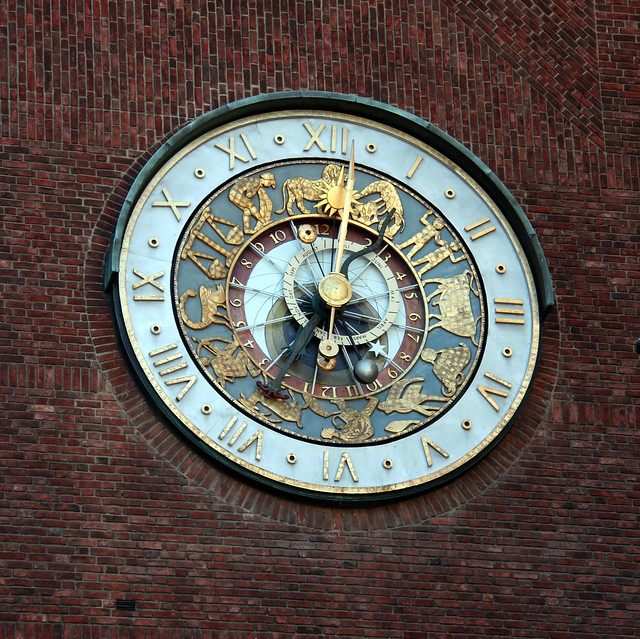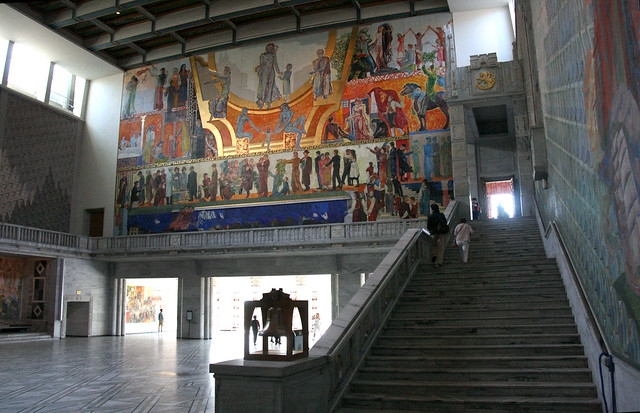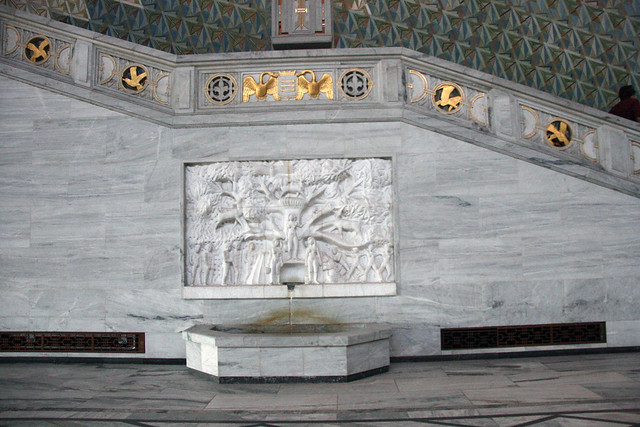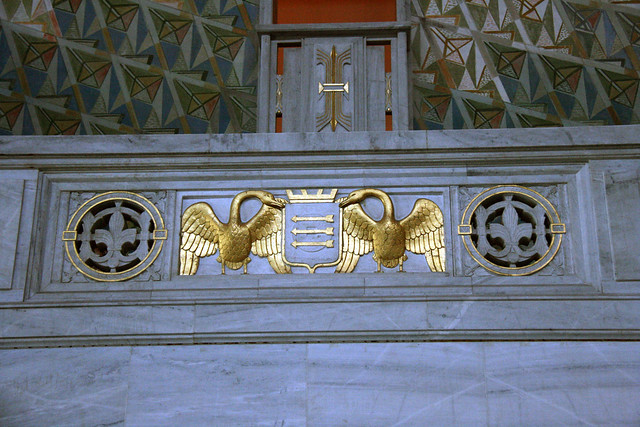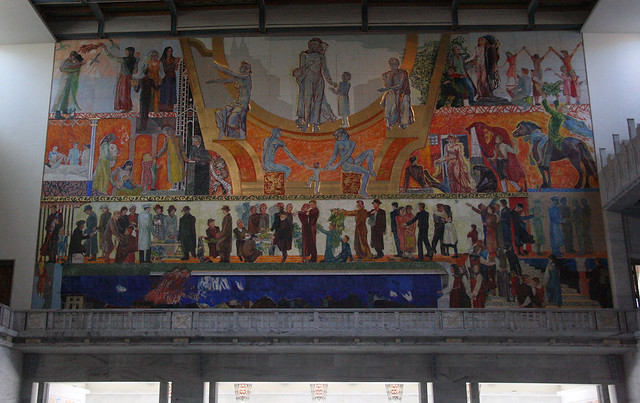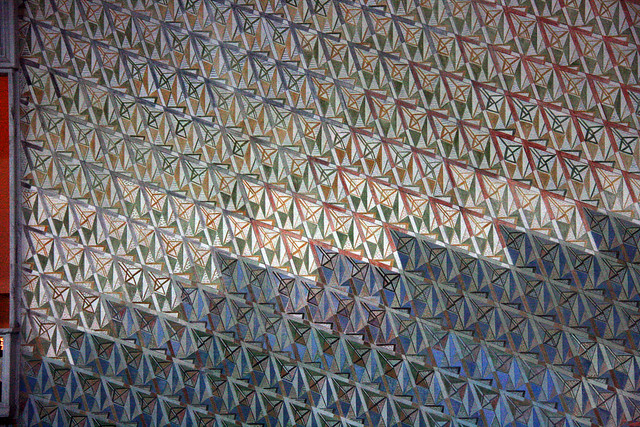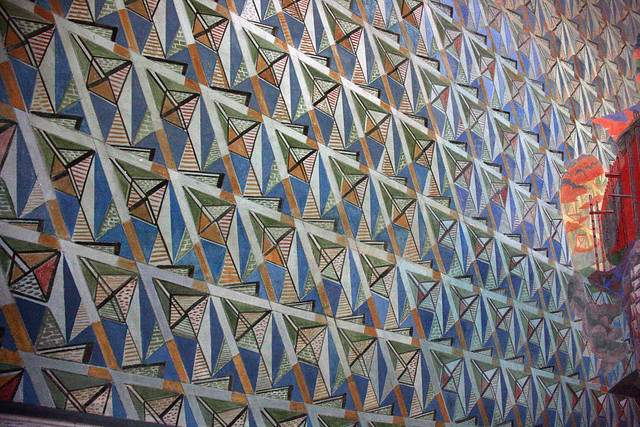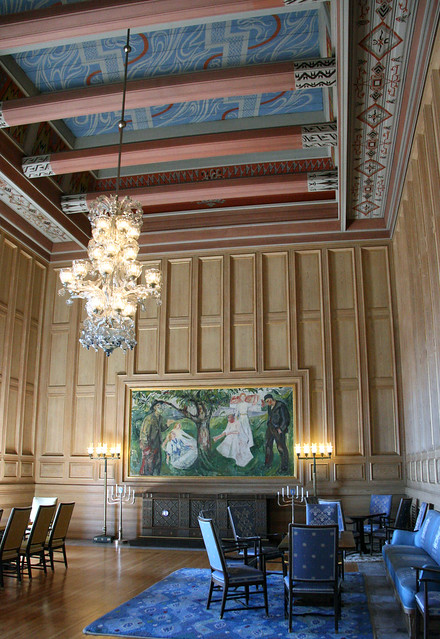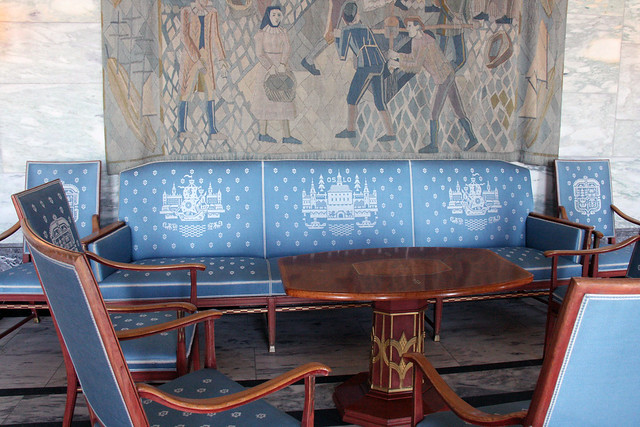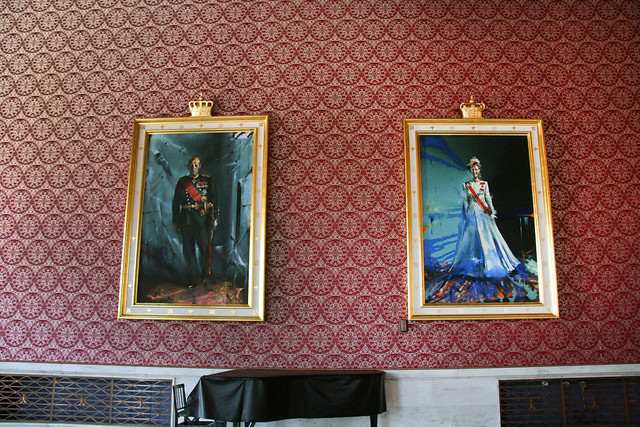The Nobel Prizes hold special meaning in my family because my father worked for Elsevier Publishing when we lived in Amsterdam. For five years he was the science editor for the English-language series of all the science-related Nobel Prize Lectures from 1901 to 1966.
Though my father did not work on the Peace Prize, I was thrilled to see The Nobel Peace Center (Norwegian: Nobels Fredssenter) when we visited Oslo this summer. It is located in an old train station building overlooking the harbor in the
Pipervika area.
A temporary exhibit by Kendell Geers was installed in front of the Peace Center. Geers is fascinated by words with double meanings and those that exist in “symbiosis”.
In
Slaughter/laughter, the neon leading “S” flickers on and off. Originally created in response to the September 11th attacks on the World Trade Center, Geers suggested that Slaughter/Laughter could also reflect the story of
Alfred Nobel, whose discovery of dynamite ultimately led to the establishment of the Nobel Peace Prize.
The Nobel Peace Center is within view of the Oslo City Hall (Oslo rådhus), just across the Vigeland Fountain.
Its distinctive white clock faces the harbor.
On the opposite side of the building is the main entrance with a double swan fountain…
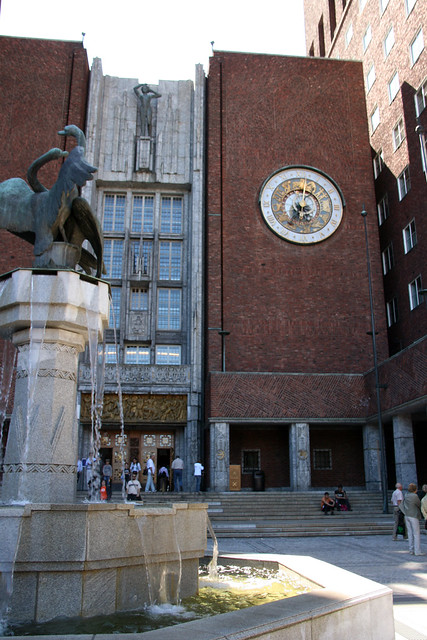
… a beautiful astrological clock…
…and enchanting wood bas relief carvings depicting scenes from Norwegian folk tales.
Every year since 1990, on December 10th, the Nobel Peace Prize Award Ceremony takes place in the grand Central Hall.
Numerous Norwegian artists won commissions to complete the decorations of the hall.
Henrik Sorensens painted the large mural on the south wall between 1938 and 1950. Titled “Administration and Festivity” depicted scenes from Norwegian legends and history, including many from World War II.
Alf Rolfsen painted the mural along the staircase. The scene at the bottom of the stairs depicts the legend of St. Hallvard, Oslo’s patron saint.
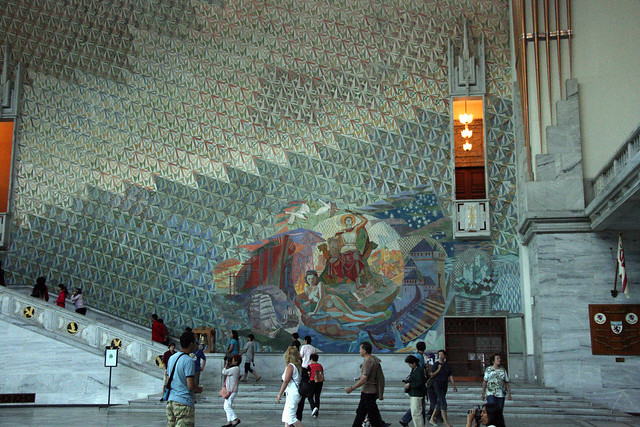
OSLO’S PATRON SAINT
The story of St. Hallvard is a constantly recurring theme in the decorative elements of the City Hall. According to legend Hallvard was a highborn youth who in 1043 tried to save a woman from being assaulted. He took her aboard his boat in order to reach safety on the other side of the fjord, but they were pursued and killed, Hallvard being shot by three arrows. His body was weighted down with a millstone and thrown into the sea, but both his body and the stone floated up to the surface. When this became known, the local people saw it as a sign and worshipped him as a saint. Hallvard was originally buried at Lier, southwest of the town, but when the Oslo Cathedral was completed in 1130, his bones were placed in a shrine before the high altar. Two centuries later Oslo took into use a city seal depicting the St. Hallvard legend. The present coat of arms was designed in 1924, when the capital was about to change its name from Christiana back to Oslo. Against a background of stars in the sky, St. Hallvard is shown sitting on a throne of two lions. He holds a millstone in one hand and three arrows in the other. At his feet lies a woman. The surrounding inscription reads Unanimiter et constanter Oslo(united and resolute).
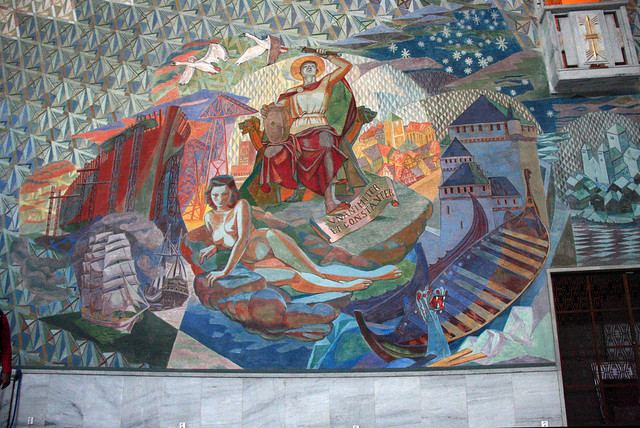
At the top of the stairs is the Munch Room with the beautifully adorned ceiling...
...Edvard Munch's painting "Life" as the focal point...
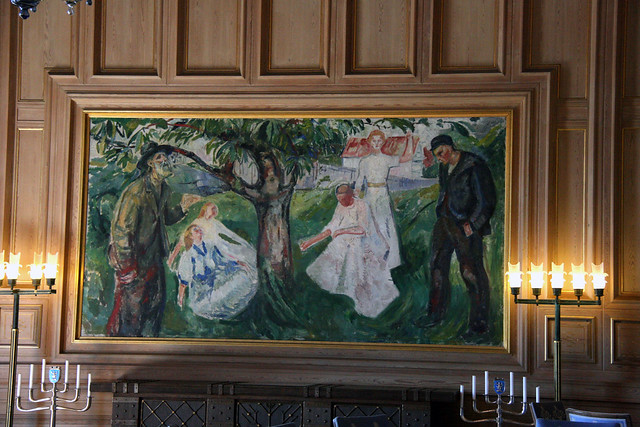 |
Edvard Munch (1863 - 1944) "Life" |
...and furniture with the elegant wood frames and upholstered with tapestry in a shade of blue so characteristic in Scandinavia.
Down the hall, through these richly-decorated wooden doors…
…is the grand dining hall, which boasts the painted portraits of the King Harald V and Queen Sonja…
…and a large dining table lined with Scandinavian blue chairs...
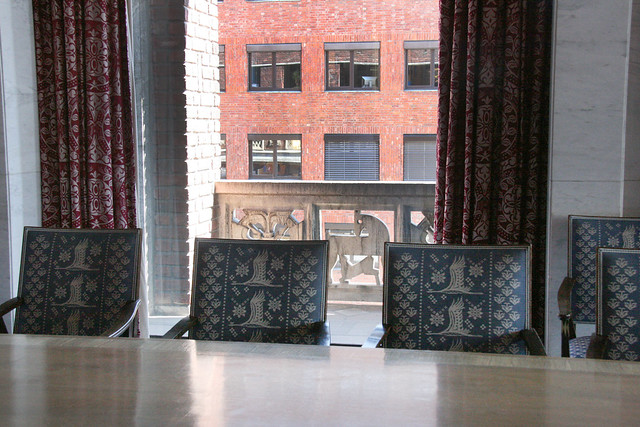 ...upholstered in a tapestry with a regal flying swan pattern…
...upholstered in a tapestry with a regal flying swan pattern…
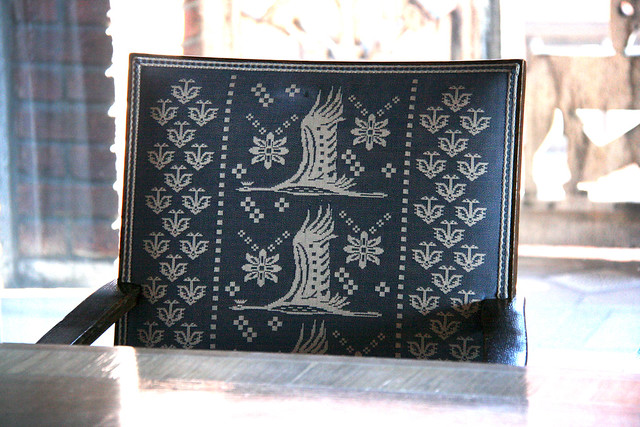
...which matches the chairs reserved for the 2010 winner of the Nobel Peace Prize, Chinese dissident Liu Xiaobo, and his wife.
The Nobel Committee recognized his participation in the 1989 demonstrations in Tiananmen Square in Beijing, where he urged student protestor to remain peaceful, and his continued non-violent struggle for human rights in China. Xiaobo is serving an 11-year sentence in China for subversion and was unable to be present to receive the award. The unclaimed award and document were left in an empty chair meant for Xiaobo. His wife’s chair is also vacant because she was placed under house arrest by the Chinese government. Nobel committee chairman Thorbjoern Jangland spoke at the ceremony: “Liu has only exercised his civil rights. He has not done anything wrong. He must be released.”









